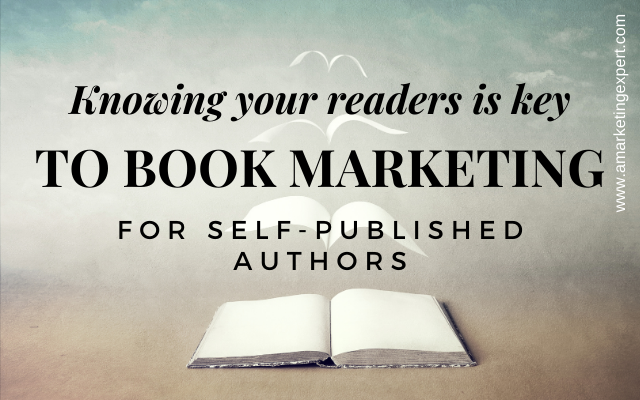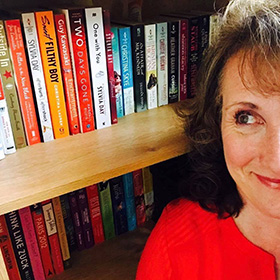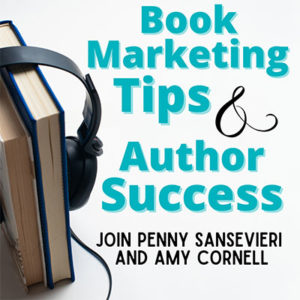Want to know the key to successful book marketing for self published authors? A healthy obsession with your readers.
It’s surprising how many authors jump into publishing without knowing who they are writing their books for. If you’re writing fiction, this is particularly important because there are subgenres and tropes that can make or break your book.
I speak with lots of authors who don’t know their genre or who have written for a genre that doesn’t exist.
Let me say this as clearly as I can.
If your book isn’t selling and you’re wondering why, I can tell you without even knowing what your book is about that you probably are marketing to the wrong readers.
Let’s go a little deeper into tell-tale signs.
Misunderstood Reader Syndrome
Low sales. If none of your marketing is working, you’re either doing the wrong things, or you’re marketing to the wrong people. Likely, it’s both.
If you don’t know who your reader is, or you aren’t sure, then you probably aren’t doing the things that drive their interest. In either case, you probably feel like you’re spending your marketing dollars and seeing little to no return on that investment.
Bad reviews. If your book is pulling in two- and three-star reviews, you’ve either written a bad book or the book doesn’t appeal to your target reader.
If the editing is bad, readers will often mention that in their reviews; same for the writing. But if the book disappointed readers in some way, and you’re seeing this as a pretty consistent message, it’s very likely that you pitched your book to the wrong target market.
Disinterested bloggers. Bloggers are pretty specific about the kind of books they will and won’t read, and they expect authors to pay attention. Rightfully so!
I’ve had bloggers tell me that if a book is pitched to them as one genre, but it turns out to be in a different genre, they won’t finish it and they certainly won’t review it. If you aren’t getting a lot of love from bloggers, it certainly could be your pitch and your book cover, but there’s also a solid chance that you don’t understand your market.
Now that we’ve identified the symptoms of Misunderstood Reader Syndrome, let’s work on some cures that we can achieve through book marketing for self published authors.
Understand Your Genre and Subgenre
Industry genres are pretty standard, but subsets or subgenres can number in the thousands. The business genre, for example, has about a hundred subsets.
Your first goal is to identify your specific subgenre by researching, studying, and reading in your market.
Keep in mind that pop culture and world events can create genre additions or adjustments. True crime, which is a huge market, has exploded in non-fiction to the point that similar “true crime” type stories have grown in fiction as well.
As we all started working from home, books on virtual work environments started popping up everywhere. The other day, I read a great blog post on covid-influenced books for kids.
Trends change. A good way to know what’s going on in your particular market is to subscribe to various industry publications and newsletters, both in print and online. And if your genre has a writers’ association, hie thee hither and join it!
Read Other Books in Your Market
You are not the only person writing books in your market. Get to know your fellow travelers. In order to write for your market, you need to first be a fan, which means reading voraciously and following authors who write in your genre.
As you’re reading other books, keep a notepad handy to track noticeable nuances like book themes, protagonist traits, or (for non-fiction) ideas or information that an author addresses that you hadn’t previously considered.
Being a fan of your own genre is really foundational book marketing for self published authors: to gain fans, you have to be one.
Spend Time Sleuthing Amazon Reviews
Amazon reviews are a great place to find out what readers like. Make a list of a few books in your market and read their reviews. Then read about the reviewers.
Clicking a reviewer profile gives you a lot of usable information – books they like, yes, but also products and items that might be a way to reach them in your work or on social media. For example, if you notice that many reviewers also buy candles, you might create a post highlighting your own favorite fall candle scent.
On the subject of social media, take some time to look around the different platforms. What kinds of groups do many of your readers belong to? Facebook groups seem to number in the bajillions; the other platforms rely more heavily on hashtags.
Regardless of how like-minded folks in your market virtually congregate, you want to show up and participate in a real and authentic way. Remember these are not arenas for direct marketing (in fact, such activities are frowned upon), but they can be a gold mine for market research.
Let’s say you have a book about cleaning green – making and using only non-toxic cleaners — and you happen upon a Facebook group dedicated to all things organic. While there, you find that the group is primarily made up of moms (your primary buyer) who really love fair-trade coffee, Instagram, and buying products from Grove Collaborative.
How do you use this information? By upping your Instagram game, for one. But also by paying attention to the product discussion as it can help you to weave some thoughtful details into your book that will speak to your readers.
Follow Influencers
Online influencers will also give you some great insight into your readers. Book marketing for self-published authors doesn’t have to be tricky.
Study what influencers share and you’ll start to see themes in terms of what gets the most likes and shares, as well as what gets the most comments.
During your reader profile research, make a list of the blogs, newsletters, social media channels, and websites that you see referenced most often by influencers. I promise you’ll see a pattern, one that can be extremely helpful in developing your content, both before and after your book is done.
Know Your Tropes/Subgenres
One thing we don’t talk about enough is subgenres and tropes. Tropes are the various themes your book contains, and readers of a certain subgenre both expect and want to see those tropes show up.
For example, in a traditional romance, the formula goes Boy meets Girl; Boy loses Girl; Boy wins Girl back. In a paranormal romance, one of the two people might also be a vampire or werewolf in disguise.
To go back to our earlier non-fiction example, the broad category of business and economics includes investing, retirement, money planning, and taxation, among other subtopics.
Paying attention and delivering on tropes and subgenres makes readers happy, and making readers happy should be at the heart of book marketing for self published authors.
Know How They Read
Everyone has a preferred method of reading, one that might even change depending on content. I have a friend who reads novels on her eReader and biographies in print.
How your readers consume your book is a big deal because you want to know what to push. Does your reader prefer print books to eBooks or do they prefer audio overall?
Use this information to determine which version of your book to launch first and also which version to push hardest in marketing efforts. For example, lots of genre fiction readers love eBooks, but when it comes to business, many readers prefer print books.
What are the preferences of your market?
While it’s not always easy to find this information – sometimes you have to really dig! – if you’re connected with publications like Publisher’s Weekly and other online publishing blogs, you’ll be able to discover general themes in your genre.
You can also turn to Pew Research, a tool that is helpful for both book format preference and overall reader profile.
Believe me when I tell you that knowing what drives your readers, and offering it to them, is the easiest way to drive your sales. As we move into the holiday book buying season, think about the work this post encourages as a way you can give your readers a gift they’ll love – and one they’ll be thrilled to share with others.






0 Comments
Trackbacks/Pingbacks